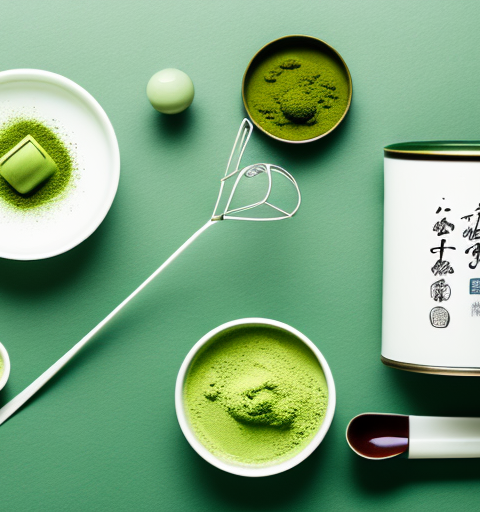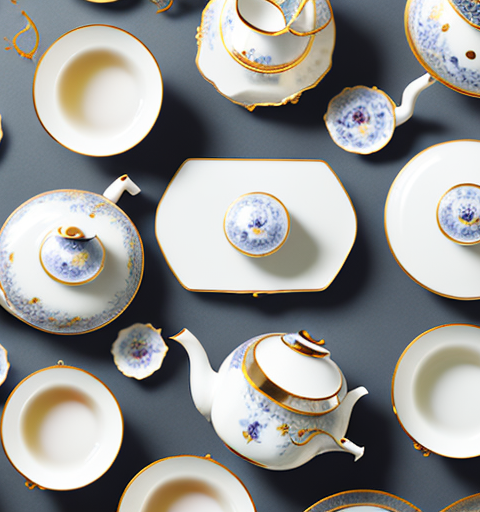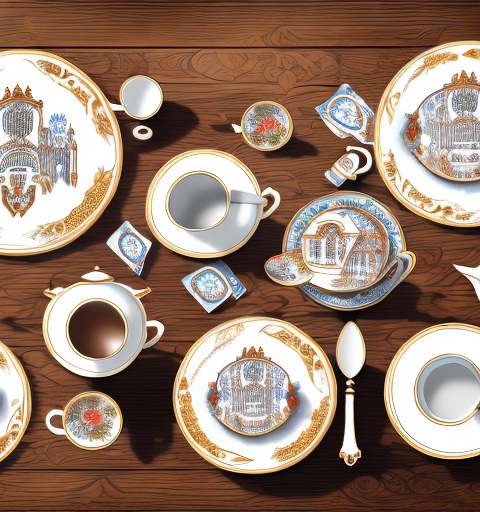Antique teapots hold a captivating allure for collectors and enthusiasts around the world. Their rich history and exquisite craftsmanship make them highly sought after items. In this article, we will delve into the fascinating world of antique teapots, exploring their origins, understanding their value, and discovering notable collections. Whether you are a seasoned collector or a novice in the world of antiques, this guide will provide valuable insights into starting your own collection and showcase some remarkable case studies. So, grab your favorite teacup, settle in, and let’s embark on a journey of discovery into the value of antique teapots.
The History of Teapots
The origins of teapots can be traced back to ancient times. The Chinese are credited with inventing the teapot during the Yuan Dynasty (1271-1368). Tea drinking became an integral part of Chinese culture, and the teapot played a crucial role in the preparation and consumption of tea.
During the Yuan Dynasty, teapots were primarily made of porcelain, a material that was highly valued for its beauty and durability. These early teapots were small in size and had a simple design, with a spout for pouring and a handle for holding.
As tea drinking spread to other parts of the world, teapot designs began to evolve, influenced by various cultures and artistic movements. In Europe, for example, teapots started to take on a more elaborate and decorative style during the Renaissance period.
The Ming Dynasty (1368-1644) saw a significant advancement in teapot designs. Porcelain teapots became more refined, with intricate patterns and vibrant colors. The craftsmanship of these teapots was highly regarded, and they were often seen as a symbol of wealth and status.
With the arrival of the Georgian era in the 18th century, silver teapots became increasingly popular. These teapots were not only functional but also served as decorative pieces, often adorned with intricate engravings and ornate handles. The elegance and sophistication of silver teapots made them a favorite among the upper classes.
During the Victorian era, teapot designs became even more diverse. The Industrial Revolution brought about new manufacturing techniques, allowing for mass production of teapots. This led to a wide range of styles and materials being used, from ceramic and glass to silver and copper.
In the 20th century, teapot designs continued to evolve with the rise of modernism and the Art Deco movement. Teapots became more streamlined and geometric in shape, reflecting the changing aesthetics of the time.
Today, teapots come in a variety of styles, materials, and sizes. From traditional porcelain teapots to contemporary glass and stainless steel designs, there is a teapot to suit every taste and preference. Whether used for everyday tea brewing or as a decorative piece, the teapot remains an essential item in many households around the world.
Understanding the Value of Antique Teapots
The value of an antique teapot is determined by several factors. Rarity, condition, craftsmanship, and historical significance all play a role in determining its worth. Furthermore, the demand for particular styles or periods can greatly impact the value of a teapot.
Antique teapots have long fascinated collectors and enthusiasts alike. These delicate vessels not only serve a practical purpose but also hold a rich history and cultural significance. Exploring the value of antique teapots allows us to delve into the world of craftsmanship, artistry, and the stories behind these treasured objects.
Factors Influencing the Value of Antique Teapots
One key factor influencing the value of antique teapots is their rarity. Teapots that were produced in limited quantities or crafted by renowned artists and artisans tend to be more valuable. The scarcity of these teapots adds to their allure, making them highly sought after by collectors.
Condition is another essential factor to consider when assessing the value of an antique teapot. Teapots without any damage or repairs are highly sought after. The presence of any cracks, chips, or restoration work can significantly impact its value. Collectors value teapots that have stood the test of time and retain their original beauty.
Another crucial aspect that contributes to the value of an antique teapot is the craftsmanship involved in its creation. Intricate designs, fine detailing, and high-quality materials all contribute to its value. Teapots crafted by renowned makers or those associated with famous workshops often command higher prices due to their exceptional artistry and skill.
Historical significance is yet another factor that can elevate the value of an antique teapot. Teapots that have a connection to significant historical events or prominent individuals often hold a special place in the hearts of collectors. These teapots become tangible links to the past, allowing us to glimpse into the lives of those who used them.
How to Determine the Age of a Teapot
Determining the age of an antique teapot requires careful examination and research. Study the hallmarks, maker’s marks, and any accompanying documentation to establish its origin and age. These marks often provide valuable clues about the teapot’s history, such as the maker, the place of production, and sometimes even the date of creation.
Consulting experts in the field is invaluable when trying to determine the age of a teapot. Their knowledge and experience can help decipher the subtle nuances and characteristics of different styles and periods. They can guide you in understanding the evolution of teapot design and the techniques used during specific eras.
Reference books and online resources are also valuable tools for gaining a deeper understanding of different teapot styles and periods. These resources provide detailed information and visual references that can aid in identifying the age and origin of a teapot. Studying the work of renowned teapot makers and exploring the historical context of specific styles can further enhance your knowledge and appreciation.
Uncovering the age of an antique teapot is like unraveling a captivating mystery. Each clue you discover brings you closer to understanding its story and significance. The journey of exploration and discovery adds an element of excitement to the world of antique teapot collecting.
Notable Antique Teapot Collections Around the World
Throughout the world, there are remarkable collections of antique teapots that showcase the diversity and beauty of these exquisite objects.
Antique teapots have long been cherished for their intricate designs, historical significance, and cultural value. These collections offer a glimpse into the rich heritage of tea-drinking and the artistry involved in crafting these delicate vessels.
The Victoria and Albert Museum Collection
The Victoria and Albert Museum in London houses an extensive collection of antique teapots, spanning various periods and styles. From rare Chinese teapots to opulent English silver teapots, this collection is a treasure trove for teapot enthusiasts.
Visitors to the museum can marvel at the craftsmanship of teapots dating back centuries. The collection includes teapots adorned with intricate floral patterns, delicate porcelain teapots with hand-painted scenes, and even teapots made from precious metals such as silver and gold.
One standout piece in the collection is a Chinese Yixing teapot, renowned for its unique clay and exceptional craftsmanship. This teapot, with its elegant shape and rich earthy tones, is a testament to the artistry and skill of Chinese teapot makers.
The Flagstaff House Museum of Tea Ware Collection
Situated in Hong Kong, the Flagstaff House Museum of Tea Ware boasts an impressive collection of teapots. It showcases the rich history and cultural significance of tea in the region. The collection includes magnificent teapots from China, Japan, and other Asian countries.
As visitors explore the museum, they are transported back in time to the ancient tea-drinking rituals of the East. The collection features teapots adorned with intricate dragon motifs, delicate cherry blossom designs, and traditional Japanese landscapes.
One particularly fascinating teapot in the collection is a Japanese Kyusu teapot, known for its distinctive side handle and fine mesh filter. This teapot, with its elegant simplicity and functionality, represents the harmonious blend of form and function in Japanese tea culture.
Whether you are a tea enthusiast, an art lover, or a history buff, these notable collections of antique teapots offer a captivating journey through time and culture. Each teapot tells a story, reflecting the unique traditions and craftsmanship of its era and origin.
How to Start Your Own Antique Teapot Collection
If you are inspired to start your own antique teapot collection, here are some essential tips to guide you on your journey.
Antique teapots are not just functional vessels for brewing tea; they are also works of art and historical artifacts that tell stories of different cultures and time periods. Starting your own antique teapot collection can be a rewarding and fascinating endeavor. Whether you are a tea lover, a history enthusiast, or simply appreciate the beauty of antique objects, building a collection of teapots can bring joy and a sense of connection to the past.
Where to Find Antique Teapots
Antique shops, estate sales, auctions, and online marketplaces are excellent places to find antique teapots. Antique shops often have a curated selection of teapots, ranging from rare and valuable pieces to more affordable options. Estate sales can be a treasure trove for collectors, as they often offer a wide variety of antiques, including teapots, that have been passed down through generations. Auctions provide an exciting opportunity to bid on unique teapots and potentially acquire a one-of-a-kind piece for your collection.
However, the internet has revolutionized the way collectors search for and acquire antique teapots. Online marketplaces offer a vast selection of teapots from all over the world, allowing collectors to browse and purchase from the comfort of their own homes. Additionally, virtual antique fairs have become increasingly popular, providing a platform for collectors to connect with dealers and fellow enthusiasts from around the globe. These fairs often feature exclusive pieces that may not be available elsewhere, making them a must-visit for serious collectors.
Connecting with fellow collectors can also provide valuable opportunities for discovering hidden treasures. Joining teapot collecting forums, attending collector meetups, or participating in teapot-focused events can help you expand your network and gain insights into the world of antique teapot collecting. Fellow collectors may share tips on where to find rare teapots, recommend reputable dealers, or even offer to trade or sell teapots from their own collections.
Tips for Maintaining and Preserving Antique Teapots
Proper care and maintenance are essential for preserving the beauty and value of antique teapots. These delicate objects require special attention to ensure their longevity.
When it comes to cleaning antique teapots, it is crucial to avoid using harsh cleaning products that can damage the delicate surfaces or remove the patina that has developed over time. Instead, opt for gentle cleaning methods. Use a soft cloth or sponge and mild soap to gently clean the teapot, taking care not to scrub too vigorously. If there are stubborn stains or residue, consider consulting a professional conservator who specializes in antique ceramics.
Storing and displaying your teapot collection is another important aspect of preservation. It is recommended to keep your teapots in a secure area, away from direct sunlight and excessive humidity. Exposure to sunlight can cause fading or discoloration, while high humidity can lead to mold growth or damage to delicate materials. If possible, store your teapots in a temperature-controlled environment to minimize the risk of fluctuations in temperature and humidity.
Displaying your teapots can be a delightful way to showcase their beauty and share your collection with others. Consider investing in glass display cases or shelves with proper lighting to highlight the intricate details of each teapot. Arrange them in a visually pleasing manner, taking into account their size, shape, and design. Labeling or providing information about each teapot can also enhance the viewing experience for visitors.
Starting your own antique teapot collection is a journey that allows you to explore the rich history and artistry of teapots from different eras and cultures. With careful research, patience, and a discerning eye, you can build a collection that reflects your personal taste and passion for these fascinating objects. So, embark on this adventure and let the world of antique teapots captivate you.
Case Studies of Valuable Antique Teapots
Let’s explore some notable case studies of valuable antique teapots that have captivated collectors and set records in the auction world.
The Most Expensive Teapots Ever Sold
One of the most expensive teapots ever sold was a rare 18th-century Yixing teapot, which fetched a staggering price at auction. Its intricate design and exceptional craftsmanship made it a highly coveted piece.
The Yixing teapot, also known as a “purple clay” teapot, originated in the Jiangsu province of China during the Ming dynasty. These teapots are highly prized for their unique properties, such as their ability to enhance the flavor of tea over time. The craftsmanship involved in creating a Yixing teapot is meticulous, with artisans spending years perfecting their skills.
When this particular Yixing teapot went up for auction, collectors from around the world eagerly awaited the opportunity to own such a rare and remarkable piece. Bidding was fierce, with enthusiasts recognizing the historical significance and value of this teapot. In the end, it was acquired by a private collector who recognized its importance as a symbol of Chinese tea culture and craftsmanship.
Unexpected Finds: Stories of Valuable Teapots Discovered in Unexpected Places
Every collector dreams of stumbling upon a hidden gem in unexpected places. From thrift stores to garage sales, there are stories of valuable teapots discovered by chance. These unexpected finds only add to the thrill of collecting antique teapots.
One such story involves a teapot found in a dusty attic, tucked away amidst old books and forgotten memories. The teapot, initially dismissed as a mere decorative piece, turned out to be a rare 19th-century English porcelain teapot, adorned with intricate hand-painted floral motifs. Its exquisite craftsmanship and historical significance were soon recognized, and it became the centerpiece of a collector’s prized collection.
Another remarkable tale of an unexpected find involves a teapot discovered in a small antique shop in a quiet village. The teapot, made of delicate Japanese porcelain, was hidden among a jumble of other items. Its intricate design, featuring delicate cherry blossoms and gold accents, caught the eye of a knowledgeable collector who knew the true value of such a piece. It was later revealed to be a rare Meiji-era teapot, crafted by a renowned Japanese master potter.
These stories of valuable teapots found in unexpected places serve as a reminder that treasures can be hiding in plain sight. It is a testament to the thrill of collecting and the joy of uncovering hidden gems.
In conclusion, antique teapots are not just vessels for brewing tea; they are windows into history, craftsmanship, and cultural traditions. The world of antique teapots is vast and captivating, offering a glimpse into the artistry and creativity of generations past. Whether you are a connoisseur, a collector, or simply an admirer of beauty, exploring the value of antique teapots is a delightful journey filled with wonder and discovery. So, embrace the charm of these timeless treasures and embark on your own adventure in the world of antique teapots.






